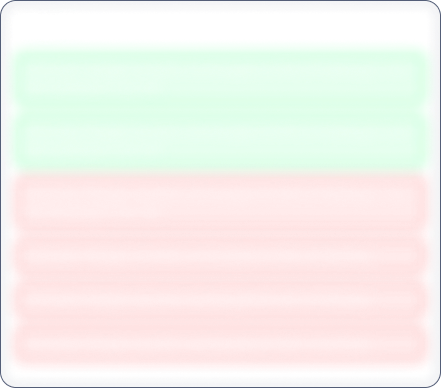Festive Sale – 50% Off!
Galaxy Medicare

No Data Available
Investor Sentiment
Galaxy Medicare Share price and Fundamental Analysis
Key Metrics
Stock Returns
Stock Heatmap

No Stocks
Smart Score

Unlock Smart Score
See Detailed Analysis & Insights


Unlock Insights
See Detailed Analysis & Insights
Technicals
Returns Calculator
If you would have investedResearch Report
No Research Report
Corporate Action

No Data Available
Financials
Key Ratios
ROE
Avg ROE (3 Yrs) : NaN%
ROCE
Avg ROCE (3 Yrs) : NaN%
ROA
Avg ROA (3 Yrs) : NaN%
NPM
Avg NPM (3 Yrs) : NaN%
Dividend History
5 Year FactSheet
Documents

No Data Available
News
Galaxy Medicare Management and History
Company Management


Unlock Management Data
See Detailed Analysis & Insights
Company History
Galaxy Medicare Limited was originally established on July 23, 1992 as a Limited Company in the Mancheshwar Industrial area of Bhubaneswar, Orissa. The Company commenced its operations in 1992 when the founder, Mr. Dillip Kumar Das, acquired a closed business unit, M/s Cure Aids Private Limited from Odisha Industrial Infrastructure Development Corporation (IDCO) and Odisha State Financial Corporation under the investment promotion, facilitation and aftercare strategy of Industrial Promotion and Investment Corporation of Odisha (IPICOL) and revived the business unit to start manufacturing of Medical Devices such as Plaster of Paris Bandage (POP Bandage), Medical Tapes and Bandages, Other surgical dressings and external preparations products of Wound care & Wound management including sterile surgical wound dressing, medical disposable, adhesive bandages, absorbent gauze, etc.
In 1995, a United Kingdom based Company, selected this Company exclusively as their business partner for manufacturing of their globally renowned Plaster of Paris Bandage B.P. under the brand name 'GYPSONA,' in facilities for the regions of India, Sri Lanka, Bangladesh, and Nepal which continued till 1999, when they shifted manufacturing of Plaster of Paris Bandage B.P. to their own facility in Maharashtra.
In 2002, Company entered into a partnership with the Indian subsidiary of a Fortune 50 Company of USA with exclusive rights for manufacturing and supply of Plaster of Paris Bandage B.P under brand name of '3M CAST' and Elastic Adhesive Bandage to them and this business partnership continued uninterruptedly. The Company commenced manufacturing of Sterile Gauze Dressings, by enhancing the production as part of its expansion strategy in 2006. In 2009, it expanded the production activities to include Elastic Adhesive Bandage B.P.
At present, Company is into manufacturing, trading and exporting of Medical Devices, Plasters of Paris Bandages (POP Bandage) and Other surgical dressings in India. The business encompass manufacturing of own products under the brands of GYPSOPLAST, GYPSONET, CAREPORE, fixcan, etc. Institutional sale to various Government Department through participation in tenders on platforms like GEM Portal; Trading of medical device and other surgical dressings and exporting of manufactured product to international markets.
The Company is planning to make an Initial Public Offering of 44,40,000 Equity Shares of Rs 10/- each comprising a fresh issue of 35,52,000 Equity Shares and 8,88,000 Equity Shares through Offer for Sale.
Galaxy Medicare Share Price
Galaxy Medicare share price reflects investor sentiment toward the company and is impacted by various factors such as financial performance, market trends, and economic conditions. Share price is an indicator which shows the current value of the company's shares at which buyers or sellers can transact.
Galaxy Medicare Market Cap
Market capitalization of Galaxy Medicare indicates the total value of its outstanding shares. Marketcap is calculated by multiplying share price and outstanding shares of the company. It is a helpful metric for assessing the company's size and market Valuation. It also helps investors understand how Galaxy Medicare is valued compared to its competitors.
Galaxy Medicare PE Ratio
Galaxy Medicare PE ratio helps investors understand what is the market value of each stock compared to Galaxy Medicare 's earnings. A PE ratio higher than the average industry PE could indicate an overvaluation of the stock, whereas a lower PE compared to the average industry PE could indicate an undervaluation.
Galaxy Medicare PEG Ratio
The PEG ratio of Galaxy Medicare evaluates its PE ratio in relation to its growth rate. A PEG ratio of 1 indicates a fair value, a PEG ratio of less than 1 indicates undervaluation, and a PEG ratio of more than 1 indicates overvaluation.
Galaxy Medicare ROE (Return on Equity)
Return on Equity (ROE) measures how effectively Galaxy Medicare generates profit from shareholders' equity. A higher ROE of more than 20% indicates better financial performance in terms of profitability.
Galaxy Medicare ROCE (Return on Capital Employed)
Return on Capital Employed (ROCE) evaluates the profitability of Galaxy Medicare in relation to its capital employed. In simple terms, ROCE provides insight to investors as to how well the company is utilizing the capital deployed. A high ROCE of more than 20% shows that the business is making profitable use of its capital.
Galaxy Medicare Total Debt
Total debt of Galaxy Medicare shows how much the company owes to either banks or individual creditors. In simple terms, this is the amount the company has to repay. Total debt can be a very useful metric to show the financial health of the company. Total debt more than equity is considered to be a bad sign.
Galaxy Medicare Debt to Equity Ratio
The Debt-to-Equity (DE) ratio of Galaxy Medicare compares its total debt to shareholders' equity. A higher Debt to Equity ratio could indicate higher financial risk, while a lower ratio suggests that the company is managing its debt efficiently.
Galaxy Medicare CAGR (Compound Annual Growth Rate)
CAGR shows the consistent growth rate of Galaxy Medicare over a specific period, whether it is over a month, a year, or 10 years. It is a key metric to evaluate the company’s long-term growth potential. Main metrics for which CAGR is calculated are net sales, net profit, operating profit, and stock returns.
Galaxy Medicare Technical Analysis
Technical analysis of Galaxy Medicare helps investors get an insight into when they can enter or exit the stock. Key components of Galaxy Medicare Technical Analysis include:
Support Levels (S1, S2, S3)
There are usually multiple support levels, but the main support levels for a stock are S1, S2, S3. Support levels indicate price points where stock might get support from buyers, helping the stock stop falling and rise.
Resistance Levels (R1, R2, R3)
There are usually multiple resistance levels, but the main resistance levels for a stock are R1, R2, R3. Resistance levels represent price points where Galaxy Medicare shares often struggle to rise above due to selling pressure.
Galaxy Medicare Dividends
Dividends refer to the portion of the company’s profits distributed to its shareholders. Dividends are typically paid out in cash and reflect Galaxy Medicare ’s financial health and profitability.
Galaxy Medicare Bonus Shares
Bonus shares are usually given by companies to make the stock more affordable, increase liquidity, boost investor confidence, and more.
Galaxy Medicare Stock Split
Stock split increases the number of its outstanding shares by dividing each existing share into multiple shares. When the company offers a stock split, the face value of the stock reduces in the same proportion as the split ratio.
Galaxy Medicare Financials
The financials of Galaxy Medicare provide a complete view to investors about its net sales, net profit, operating profits, expenses, and overall financial health. Investors can analyze financial data to assess the company’s stability and also understand how the company has been growing financially.
Galaxy Medicare Profit and Loss Statements
The profit and loss statement of Galaxy Medicare highlights its net sales, net profit, total expenditure, and operating profits in the current financial year. This Profit and Loss statement is crucial for evaluating the profitability and financial stability of Galaxy Medicare .
Galaxy Medicare Balance Sheet
The balance sheet presents a snapshot of Galaxy Medicare ’s assets, liabilities, and equity of shareholders, providing insights into the financials of the company.
Galaxy Medicare Cashflow Statements
Cashflow statements track the company's cash inflows and outflows over a period. It is an essential tool for understanding how well the company manages its liquidity and finances.


